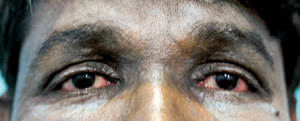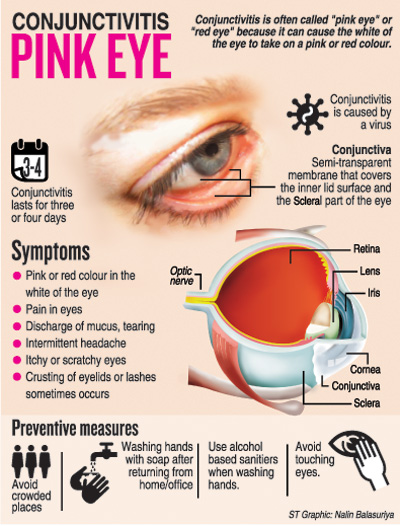News
Conjunctivitis cases higher than last year
Cases of the eye infection, conjunctivitis, are being reported in many cities, particularly in Colombo, with more than 100 patients being seen every day at the National Eye Hospital. The infection rate is higher than at the same time last year. “We have allocated a separate ward to treat the infected people to prevent transmitting to other patients,” the eye hospital’s Director, Dr. Sanath de Silva said.

Premanath Mayudunnea. Pix by Amila Gamage
He urged people to wash their hands after being in public places and refrain from using common towels and pillows to prevent the spread of infection. Red eyes, discharge of mucus, pain in the eyes, a burning or gritty feeling around the eyes, crusting in the eyelashes, tears and headaches are the main symptoms of conjunctivitis.
“The disease spreads from one eye to the other in 50 per cent of patients,” Dr. de Silva said.He asked those affected to seek medical treatment in hospital and not attempt to treat the illness with home remedies since they would not know whether the symptoms denoted conjunctivitis or another disease.

Jagath Amarasekera
Patients are advised to refrain from administering betel leaves to affected eyes, or any therapy that is not scientifically supported since faulty treatment could cause severe infections, vision loss, and inflamed corneas. Conjunctivitis is a common illness that occurs at all ages and not a very serious issue if treated properly, Dr. de Silva said. “(The infection) lasts for three to four days, during which patients should be prevented from going to congested places,” he said.
Epidemiologist Dr. Jagath Amarasekera said conjunctivitis cases were being reported from Anuradhapura, Jaffna and Galle, and the illness was spreading due to warm weather. ”This may be due to the high level of humidity and dampness found at the beginning of the rainy season, as well as increased exposure to infected individuals,” he said.
“The disease is highly contagious and spreads quickly in schools, hostels, prisons, army camps, outpatients departments at hospitals and in public transport,” he said. The risk time for conjunctivitis in the country was in May, June and July.
“Though this year’s outbreak of pink-eye has occurred slightly a month later in the season compared to 2014, its rate of spread is 15 per cent higher than in previous years,” Dr. Amarasekera said.

Sanath de Silva
Jaffna Hospital Director Bawani Pasubathi Raja also blamed the heat for the spread of the infection and said there had been many cases of conjunctivitis there since last week. “More than 75 school children are affected as well as many people who go to work,” she said. An ophthalmologist at a private hospital, Dr. M.R.H.P. Gunaratne, said there was a risk that the infection could spread to the cornea, the transparent outer layer covering the iris and the pupil. Infection and scarring of the cornea can mean permanent sight impairment.
“We’ve seen patients whose vision has become impaired due to viral conjunctivitis to such an extent that they’re now unable to drive,” Dr. Gunaratne said. A conjunctivitis patient at the National Hospital, Premanath Mayudunne, 46, from Kaduwela, said his infection had started with itching and swelling around the eyes. “Once I scratched, the whole area (around the eye) got swollen,” he said. “I took medicine from a private clinic but the condition did not get any better, the scratching and tearing are still persisting,” he said.
Jayanthi Dissanayake, 35, a resident of Nugegoda, said she been infected for the past two weeks. “By day three, this supposedly innocuous irritation hadn’t cleared up and my eyes were feeling increasingly sore, so I bought some antibiotic eye drops from a chemist,” she said.
“By day seven, the infection had spread to my left eye through the tear duct. In the days that followed, it became much worse and my eyes became bright red.”


